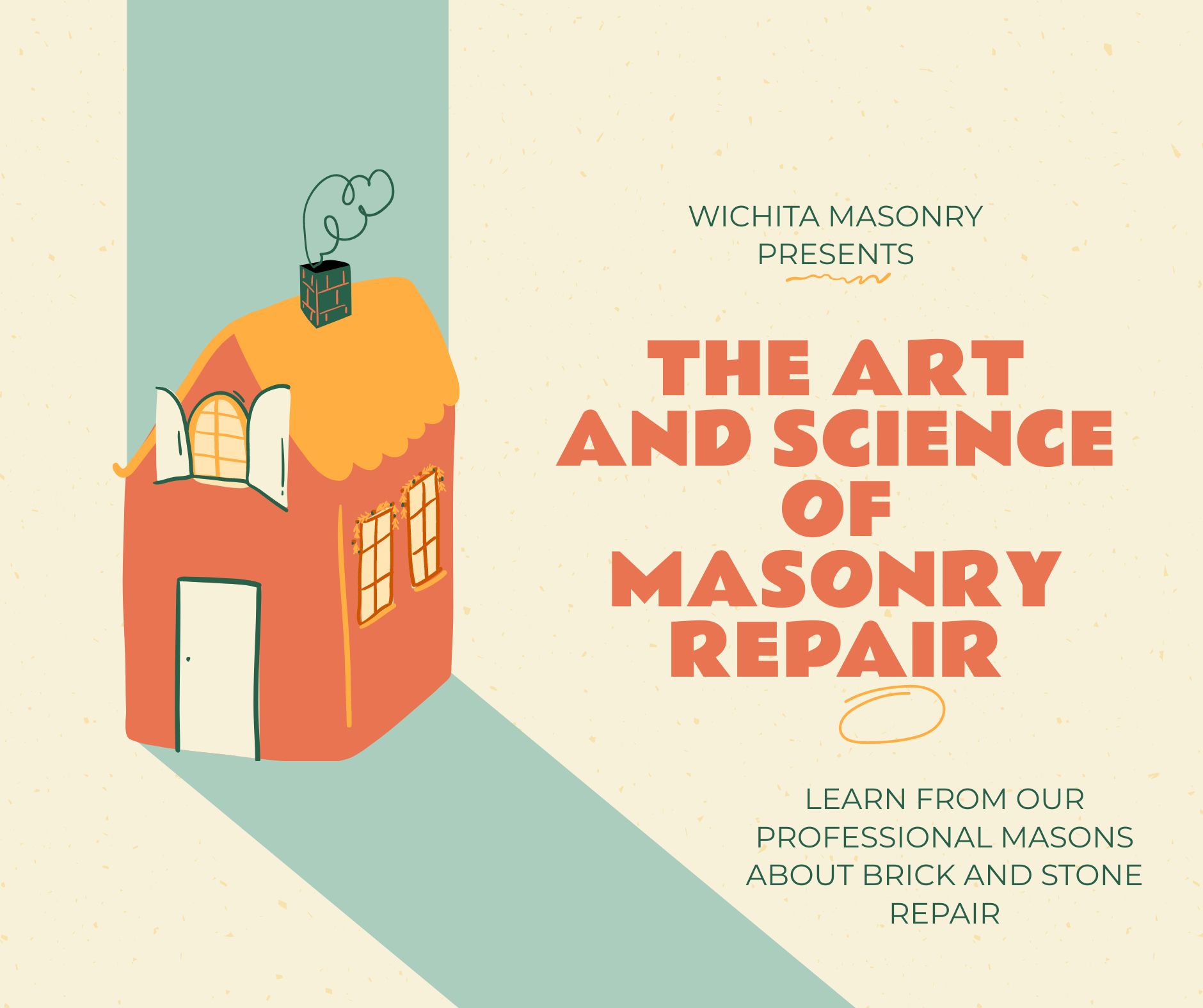How Do I Know If My Masonry Needs Repair?
Masonry structures—crafted from brick, stone, concrete block, and other durable materials—are among the most reliable building elements in residential and commercial construction. These strong, fire-resistant elements form the backbone of our homes, from foundations to chimneys. While masonry is designed to last for decades or even centuries, it isn't immune to the effects of time and environmental forces. When masonry deteriorates, it can compromise both the structural integrity of your property and its aesthetic appeal, potentially leading to costly repairs if left unaddressed.
This guide aims to help property owners identify the early warning signs that your brick, stone, or block masonry may need professional attention. By understanding when masonry restoration or repair is necessary, you can protect your investment and maintain your property's safety and value.
Why Masonry Fails Over Time
Even the sturdiest masonry work eventually succumbs to various deterioration factors. Understanding these causes helps you recognize potential issues before they become serious problems:
Weather Exposure: The freeze-thaw cycle is particularly damaging, as water penetrates small cracks, freezes, expands, and gradually breaks apart the material. This process repeatedly weakens mortar joints and can cause brick spalling over time.
Moisture Infiltration: Water is masonry's greatest enemy. Improper drainage, leaking gutters, or poor waterproofing can allow moisture to collect within walls, leading to extensive damage that necessitates brickwork repairs.
Foundation Movement: Settling or shifting foundations can place stress on masonry structures, causing cracks and misalignment that compromise structural integrity.
Inferior Materials or Workmanship: Poor-quality original materials or improper installation techniques can accelerate deterioration and necessitate early masonry and chimney repair.
Age and Maintenance Neglect: Even well-built masonry requires occasional maintenance. Structures that haven't been inspected or maintained regularly often develop problems that could have been prevented through timely tuckpointing or other preventative measures.
Visible Signs You Need Masonry Repair
Cracked Bricks or Stones
Cracks in masonry units themselves (not just the mortar) often indicate more serious problems. While hairline cracks might be merely cosmetic, deep structural cracks require immediate attention from tuckpointing contractors or masonry specialists.
Different crack patterns tell different stories:
- Vertical cracks often result from foundation settlement
- Horizontal cracks may indicate pressure buildup behind the wall
- Stair-step cracks (following mortar joints in a staggered pattern) typically suggest foundation issues or structural movement
Any crack wider than ⅛ inch merits professional evaluation, as it provides an entry point for water, accelerating deterioration.
Deteriorating or Missing Mortar
Mortar is designed to be the sacrificial element in masonry construction, protecting the more expensive bricks or stones. When you notice crumbling, recessed, or missing mortar between masonry units, it's a clear sign that repointing brick or tuckpointing is needed.
Deteriorated mortar joints appear:
- Crumbly or sandy when touched
- Recessed more than ¼ inch from the face of the brick
- Cracked or completely missing in sections
Repointing, also known as tuckpointing brick, involves removing the damaged mortar and replacing it with fresh mortar matched to the original composition and color. This process is crucial for preventing water infiltration and maintaining structural integrity.
Bulging or Bowed Walls
Walls that appear to bulge outward or bow inward represent a serious structural concern that usually requires immediate masonry repair. This condition occurs when:
- Water freezes behind masonry and pushes it outward
- Internal ties or supports fail
- Foundation movement places stress on the wall
A bowed masonry wall is at risk of collapse and should prompt an urgent call to a chimney mason or masonry restoration specialist.
Water Stains, Efflorescence, or Mold
White, powdery deposits (efflorescence) on brick surfaces indicate that water is moving through the masonry, dissolving salts within the materials, and depositing them on the surface as the water evaporates. While efflorescence itself isn't harmful, it signals water infiltration that can cause more serious damage.
Other moisture indicators include:
- Dark water stains on brick or stone
- Green algae or moss growth
- Black mold on interior walls adjacent to masonry
These signs often point to problems that require masonry repair chimney specialists or restoration experts to address before structural damage occurs.
Loose or Spalling Bricks
Spalling brick—where the face of the brick flakes or pops off—is a common result of freeze-thaw cycles and trapped moisture. When water penetrates a brick, then freezes and expands, it can break apart the brick's surface.
Signs of spalling include:
- Flaking or crumbling brick faces
- Pieces of brick material collecting at the base of walls
- Pitted or rough brick surfaces
- Bricks that can be moved by hand
Fixing brick that has begun to spall often requires replacement of the damaged units and addressing the underlying moisture issues through proper tuckpointing brickwork and waterproofing.
Less Obvious Signs to Watch For
Drafts or Temperature Fluctuations Indoors
Sometimes masonry problems make themselves known through comfort issues inside your home. If you notice:
- Unexplained drafts near exterior walls
- Rooms that are unusually cold in winter or hot in summer
- Inconsistent temperatures between rooms
These symptoms may indicate air infiltration through cracked or deteriorated masonry that needs repointing chimneys or wall repair.
Increased Pests or Insects
A sudden increase in insect activity or small pests entering your home can signal degraded masonry. Deteriorated mortar joints and cracked masonry create perfect entry points for:
- Ants and other insects
- Mice and small rodents
- Bats (particularly in chimney structures)
The need for masonry and chimney repair becomes evident when these unwelcome guests begin appearing more frequently.
Interior Wall Cracks or Water Damage
Problems in exterior masonry often manifest on interior surfaces. Be alert for:
- Cracks in plaster or drywall, especially near windows, doors, or ceilings
- Peeling paint or wallpaper
- Water stains on interior walls or ceilings
- Musty odors suggesting hidden moisture
These interior symptoms frequently correlate with exterior masonry failures that require pointing and repointing to resolve.
When to Call a Professional
While minor cosmetic issues might be suitable for DIY repair, many masonry problems require professional assessment and intervention. Consider contacting masonry restoration specialists when:
- Cracks are widening or changing over time
- Multiple symptoms appear simultaneously
- The problem affects structural elements like load-bearing walls
- Chimney crown repair or other elevated work is needed (which presents safety concerns)
- Water infiltration is significant or persistent
A professional masonry inspection typically includes:
- Visual assessment of all masonry surfaces
- Moisture testing
- Evaluation of mortar condition
- Structural analysis
- Documentation of problem areas
- Recommendations for repair strategies (tuckpointing, brick patching, full replacement, etc.)
The expertise of a qualified chimney mason or masonry contractor ensures repairs are performed correctly, using appropriate materials and techniques that extend the life of your masonry.
The Next Steps
Masonry problems rarely improve on their own—in fact, they typically worsen over time, especially when moisture is involved. By conducting regular visual inspections of your property's brickwork, stonework, and concrete, you can identify issues early, when they're easier and less expensive to address.
Remember to check your masonry twice yearly, ideally in spring and fall, and after severe weather events. Document any changes you observe, as this information will be valuable to masonry repair professionals.
Don't delay necessary repairs: what might be a simple tuckpointing job today could evolve into major structural work if neglected. Investing in timely masonry restoration not only preserves your property's value and appearance but also ensures the safety and integrity of your home for years to come.
You might also like



